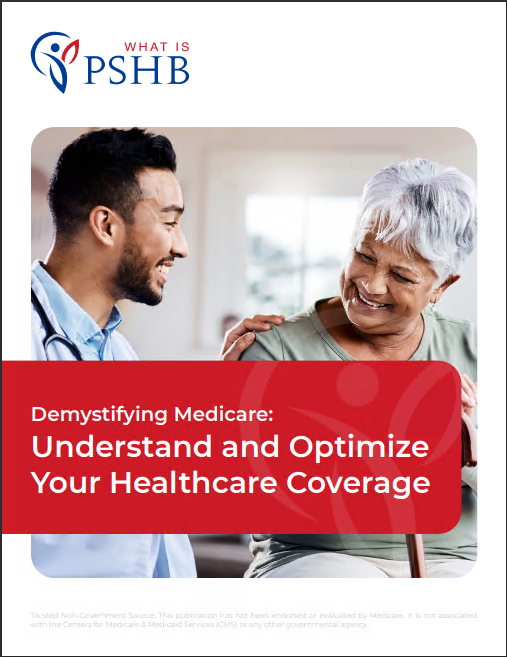Key Takeaways:
- The 2024 Open Season for Postal Service Health Benefits (PSHB) runs from November 11 to December 9, 2024.
- USPS employees and retirees will officially transition to the PSHB program on January 1, 2025, as a result of the Postal Service Reform Act of 2022.
It’s Crunch Time: Ensuring Your Health Coverage Stays Solid
If you’re a USPS worker or retiree, the Postal Service Health Benefits (PSHB) Open Season from November 11 to December 9, 2024, is a critical period to lock in the right health coverage. The clock is ticking, and it’s time to dive into what Open Season means for you and how to make sure your coverage remains robust as the PSHB program officially launches on January 1, 2025. Whether you’re familiar with the Federal Employees Health Benefits (FEHB) program or you’re navigating new waters, it’s important to get this right.
Understanding the Shift to PSHB
The Postal Service Reform Act of 2022 brought big changes to the health coverage landscape for USPS employees and retirees. As part of this reform, the Postal Service Health Benefits (PSHB) program is taking over from the FEHB plan, marking the most significant update to your health coverage in years. Though this shift might sound overwhelming, you’ve got the opportunity to make changes or stick with something familiar during the 2024 Open Season.
So, what exactly is different? The good news is that your dental and vision coverage under FEDVIP (Federal Employees Dental and Vision Insurance Program) stays the same, meaning services like cleanings, eye exams, and glasses are all covered. The PSHB change focuses on your primary health plan, but it’s crucial to review your options during Open Season to make sure your coverage still aligns with your needs.
Open Season—What’s at Stake?
During Open Season, you have the power to review, modify, or confirm your health coverage. This period is especially important because once the PSHB launch hits on January 1, 2025, your choices will lock in for the year. If you’re wondering, “Do I need to make changes?” here’s why you should consider it:
- Review Your Plan Options: While many of you will automatically transition into a PSHB plan similar to your current FEHB coverage, it’s still smart to review the new options. Changes in premiums, covered services, and deductibles could impact your healthcare costs for 2025.
- Check Premiums: PSHB premiums vary based on your plan and family size. On average, the biweekly premiums for 2025 are $397.35 for self-only, $858.89 for self-plus-one, and $934.65 for self-and-family plans. With the government covering 72% of the total premium, the amount you contribute is 28%. For instance, in a self-only plan, you’ll be paying about $111.26 per pay period, or $2,892.76 annually, out of pocket. So, it pays to compare.
- Coordination with Medicare: If you’re nearing retirement or already retired, understanding how PSHB interacts with Medicare is key. Depending on when you retire, you may be required to enroll in Medicare Part B to maintain your PSHB plan. Failure to do so could leave you with gaps in coverage.
Dental and Vision Coverage Through FEDVIP
Unlike your main health plan, the transition to PSHB won’t affect your dental and vision coverage under FEDVIP. That’s a relief, right? FEDVIP continues to offer coverage for things like routine dental exams, cleanings, prescription eyewear, and more. However, there are some premium adjustments to be aware of:
- Dental Premiums: Rising by an average of 2.97% in 2025. While that may seem like a small increase, it’s important to check if your plan’s specifics still align with your needs.
- Vision Premiums: These are seeing a more modest increase of 0.87%. If you use a lot of vision services, this small bump is a bit of good news in the face of rising healthcare costs.
Medicare Part B and PSHB: What You Need to Know
For those of you approaching Medicare eligibility, PSHB comes with specific rules that tie into Medicare Part B. Your Medicare enrollment status will directly impact your PSHB plan once you retire. Here’s the breakdown:
- If you retire on or before January 1, 2025: You aren’t required to enroll in Medicare Part B to maintain your PSHB coverage.
- If you retire after January 1, 2025: You will be required to enroll in Medicare Part B once you become eligible (usually at age 65) to maintain your PSHB coverage. This rule also applies to your family members under the plan.
For retirees already on Medicare Part B, PSHB plans often come with additional savings, such as lower out-of-pocket costs for medical services and even reimbursement of Part B premiums. This could potentially save you money over the long term, so it’s worth diving into the details during Open Season.
Prescription Drug Coverage: A No-Brainer
One of the significant perks of PSHB for Medicare-eligible participants is the inclusion of Medicare Part D prescription drug coverage. That means you won’t need to worry about paying separate premiums for Part D coverage. However, plan formularies vary, so it’s essential to check which medications are covered under your PSHB plan. This could save you from any unpleasant surprises when you pick up your prescriptions in 2025.
How to Make Your Health Plan Decision
With so much at stake during Open Season, the right tools can make all the difference. The OPM plan comparison tool will be available to help you sort through PSHB and FEDVIP options. Whether you’re comparing premium costs or coverage options, this tool can make it easier to find a plan that fits your budget and healthcare needs.
Things to consider:
- Monthly Premiums: Does the new plan fit within your budget?
- Out-of-Pocket Costs: What are the deductibles, co-pays, and other costs associated with the plan?
- Network Coverage: Does the plan give you access to your preferred doctors and medical facilities?
- Prescription Coverage: Does the plan’s formulary cover the medications you need at a price that works for you?
The Clock is Ticking: Don’t Miss Out
As the PSHB Open Season nears its end on December 9, 2024, don’t let procrastination get the best of you. Whether you’re happy with your current coverage or looking to switch things up, you’ve got a deadline to meet. Missing the Open Season window could leave you stuck with a plan that doesn’t meet your needs or paying more out-of-pocket than necessary.
Mark your calendars, review your options, and make sure to act before the December 9 deadline to ensure your health coverage is ready to go on January 1, 2025.
Stay on Top of Your Health Coverage
Making the switch to PSHB doesn’t have to be complicated, but it does require some careful attention during the 2024 Open Season. With the right plan, you’ll set yourself up for a solid year of health coverage, ensuring you and your family are well-protected come January 2025. Make the time to review your options, weigh the costs, and lock in the best coverage to suit your needs.






